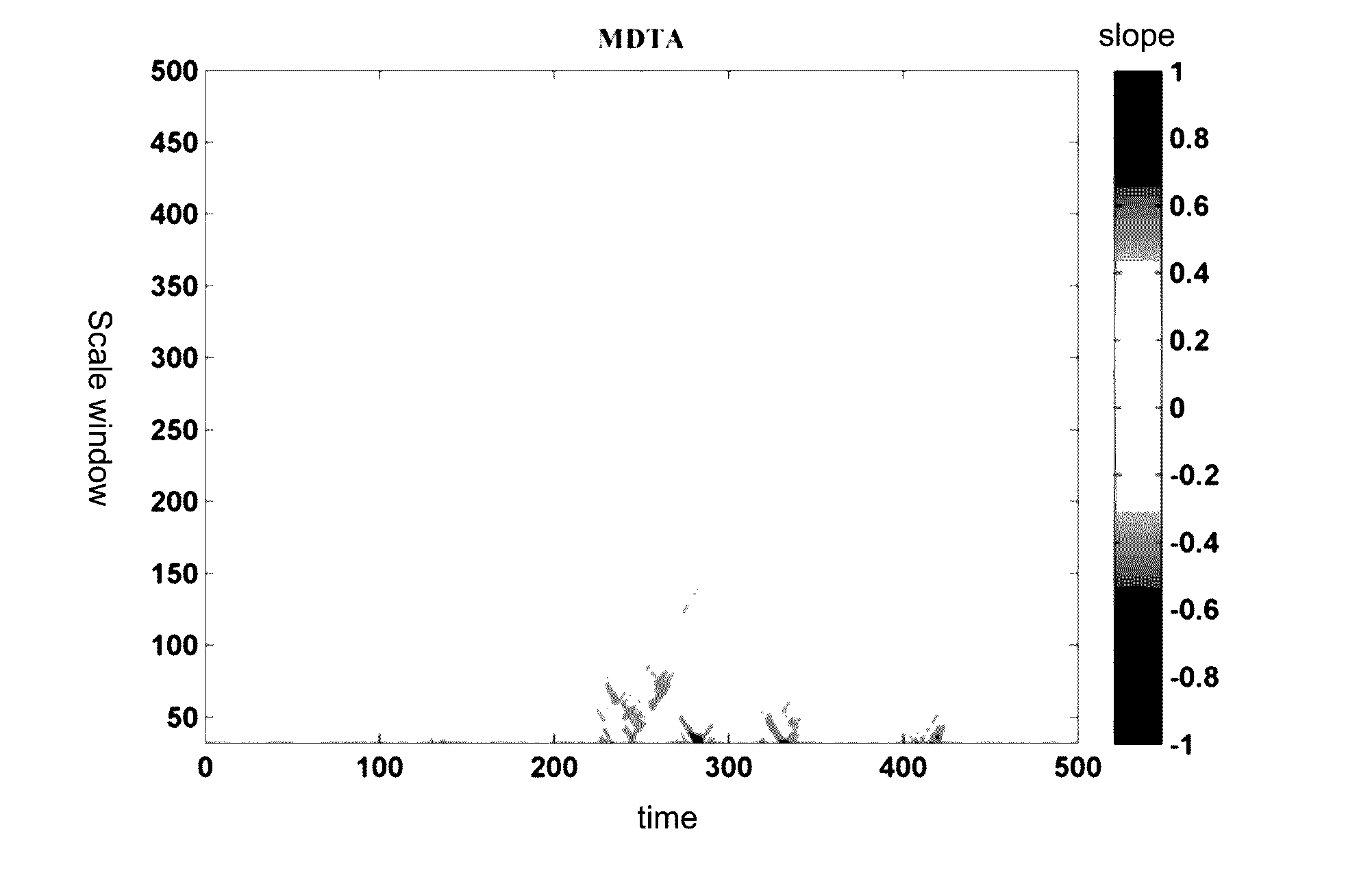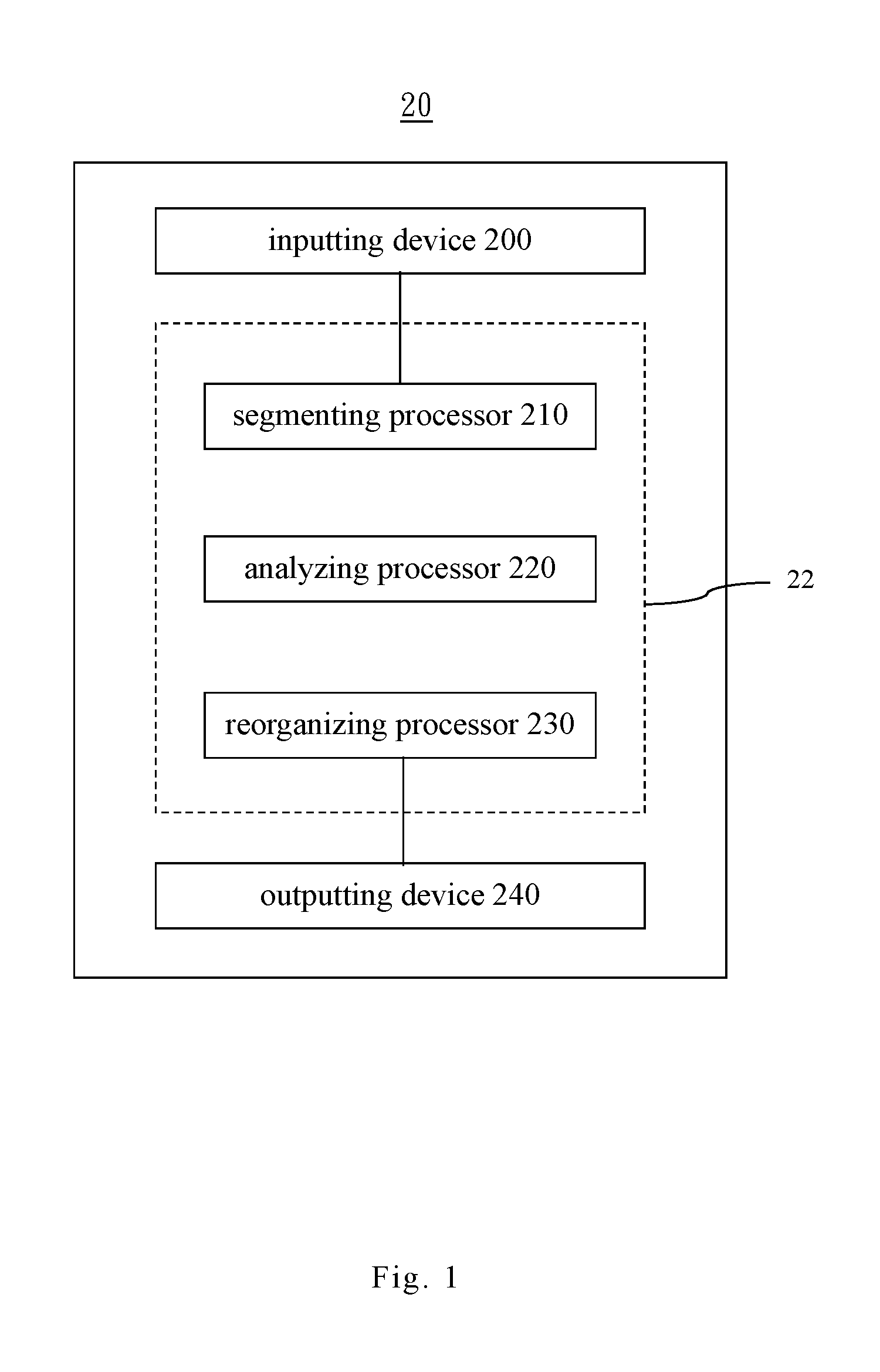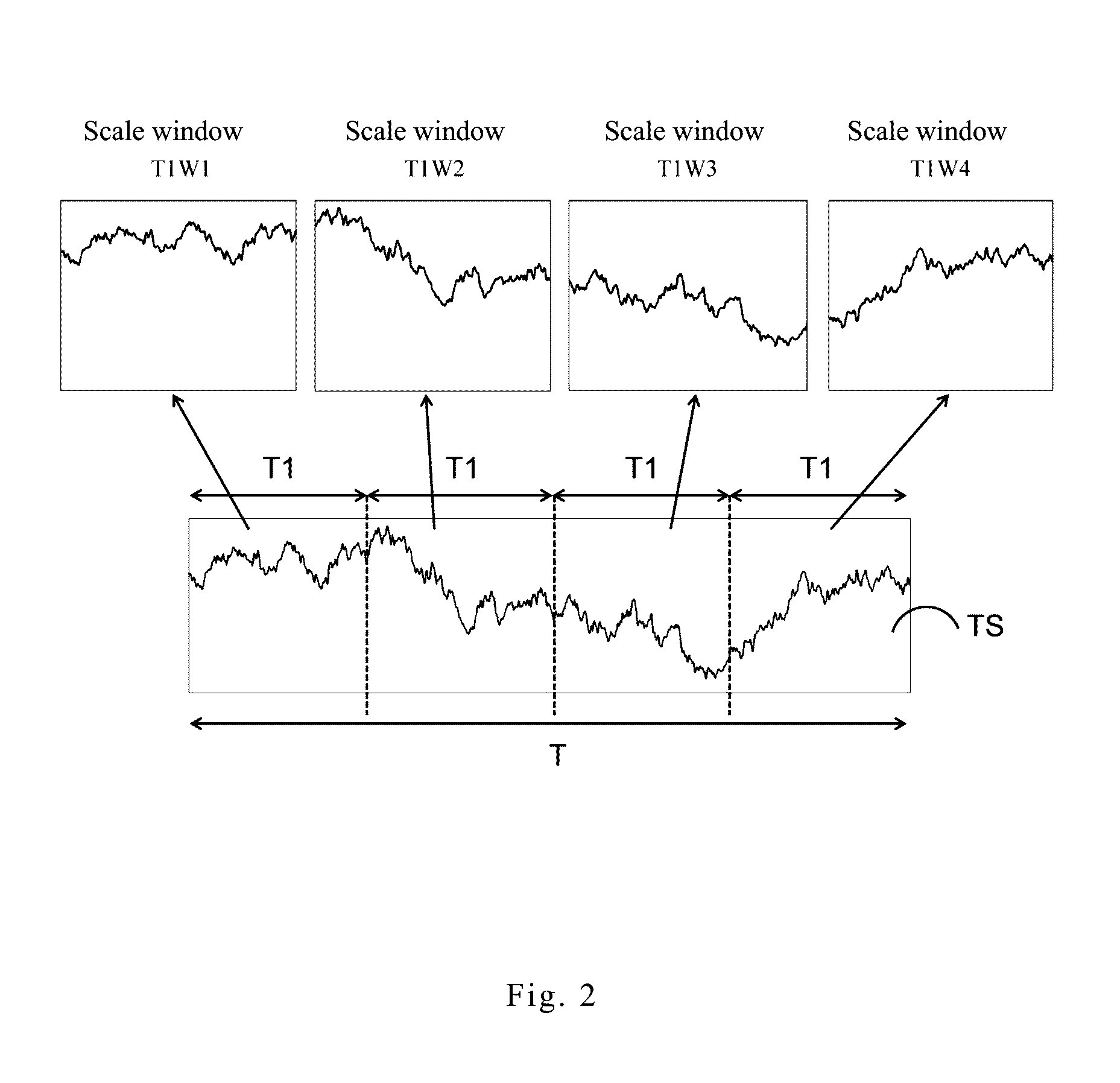Diagram building system and method for a signal data analyzing
- Summary
- Abstract
- Description
- Claims
- Application Information
AI Technical Summary
Benefits of technology
Problems solved by technology
Method used
Image
Examples
first embodiment
[0043]Please refer to FIG. 2 showing a diagram of the signal segmented in the invention. The segmenting processor 210 of the invention divides the signal data TS into a plurality of window scales according to one of time interval scales, wherein each time interval scale is one of time periods which the signal data with. In an embodiment, when the time period T is 600 seconds and the time interval scale T1 is 20 seconds, the signal data TS is divided into 30 window scales by the segmenting processor 210. When the time interval scale T1 is 40 seconds, the signal data TS is divided into 15 window scales, which is not limited herein.
[0044]Please refer to FIG. 2, in order to clearly describe the features of the invention, the signal data TS being divided into 4 window scales by the segmenting processor 210 based on the time interval scale T1 is taken as an example. The 4 window scales are respectively a window scale T1W1, a window scale T1W2, a window scale T1W3 and a window scale T1W4, ...
second embodiment
[0051]In another embodiment, please refer to FIG. 5 showing a diagram of the signal segmented in the invention. The segmenting processor 210 dividing the signal data TS into 6 window scales according to the time interval scale T2 is taken as an example. The 6 window scales are respectively a window scale T2W1, a window scale T2W2, a window scale T2W3, a window scale T2W4, a window scale T2W5, and a window scale T2W6, which is not limited herein.
[0052]The analyzing processor 220 repeats to decompose the window scale T2W1, the window scale T2W2, the window scale T2W3, the window scale T2W4, the window scale T2W5, and the window scale T2W6 by HHT algorithm to generate the quantized windows (T2W1F1, T2W1F2, T2W1F3, T2W1F4; T2W2F1, T2W2F2, T2W2F3, T2W2F4; T2W3F1, T2W3F2, T2W3F3, T2W3F4; T2W4F1, T2W4F2, T2W4F3, T2W4F4; T2W5F1, T2W5F2, T2W5F3, T2W5F4; T2W6F1, T2W6F2, T2W6F3, T2W6F4) respectively according to the first component F1, the second component F2, the third component F3, and the f...
PUM
 Login to View More
Login to View More Abstract
Description
Claims
Application Information
 Login to View More
Login to View More - R&D
- Intellectual Property
- Life Sciences
- Materials
- Tech Scout
- Unparalleled Data Quality
- Higher Quality Content
- 60% Fewer Hallucinations
Browse by: Latest US Patents, China's latest patents, Technical Efficacy Thesaurus, Application Domain, Technology Topic, Popular Technical Reports.
© 2025 PatSnap. All rights reserved.Legal|Privacy policy|Modern Slavery Act Transparency Statement|Sitemap|About US| Contact US: help@patsnap.com



